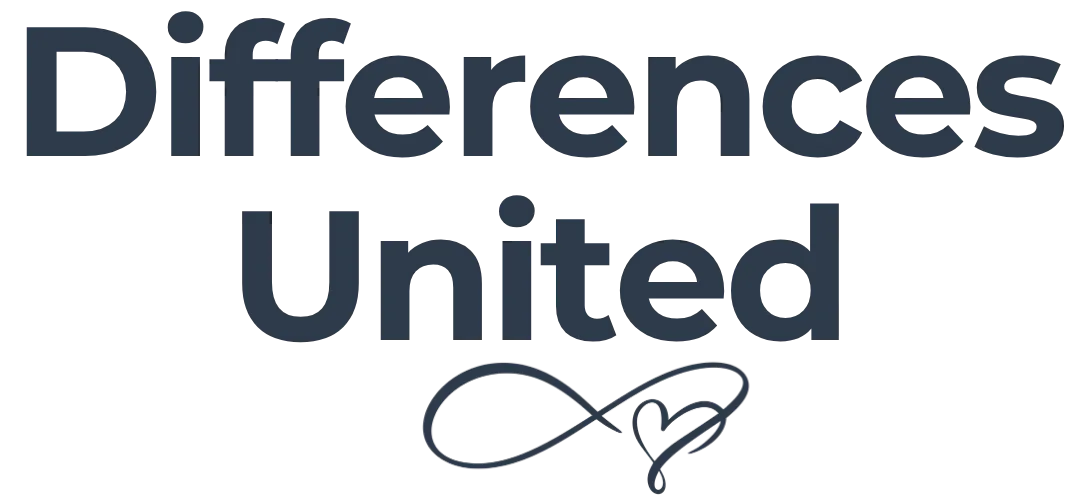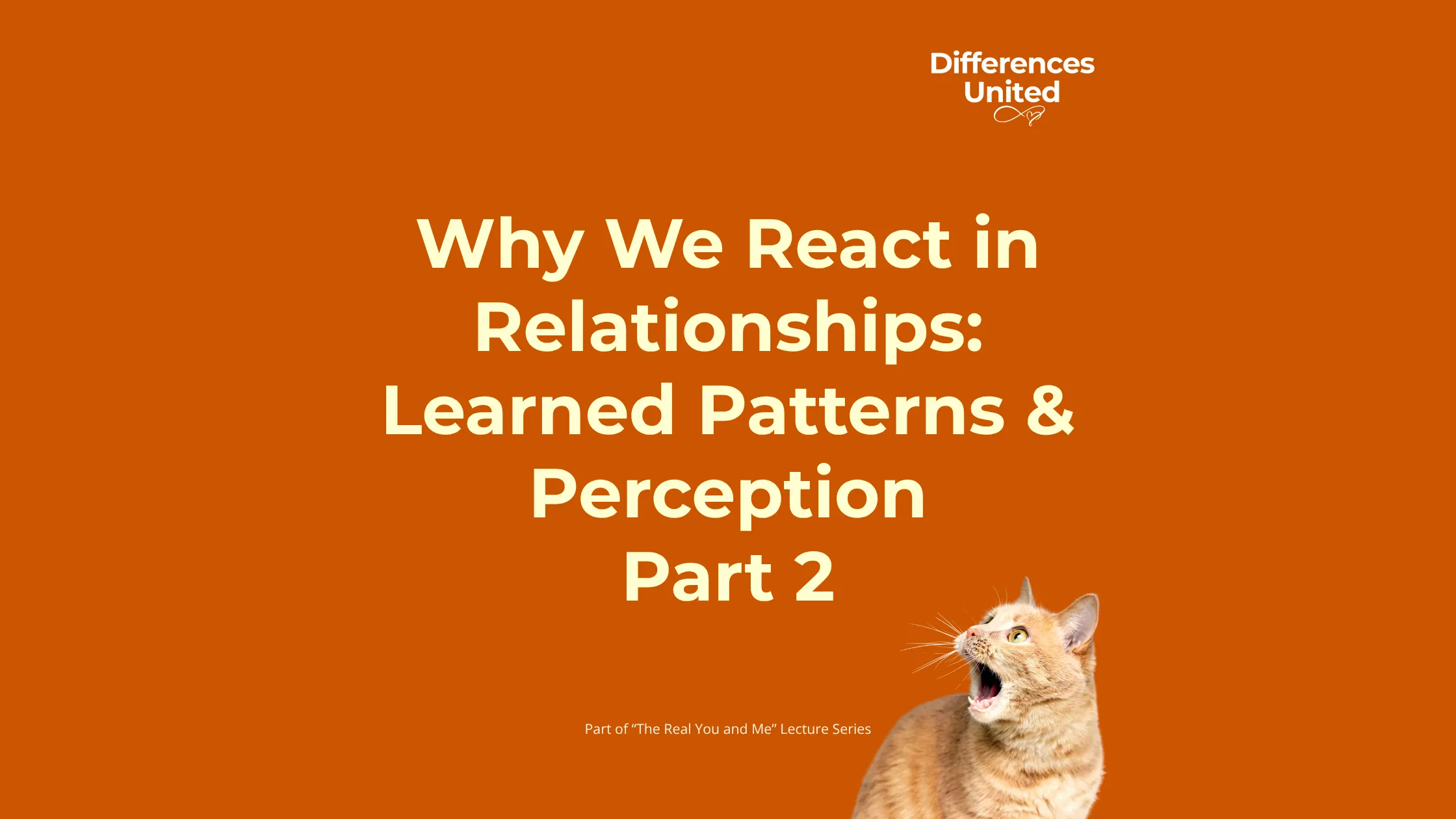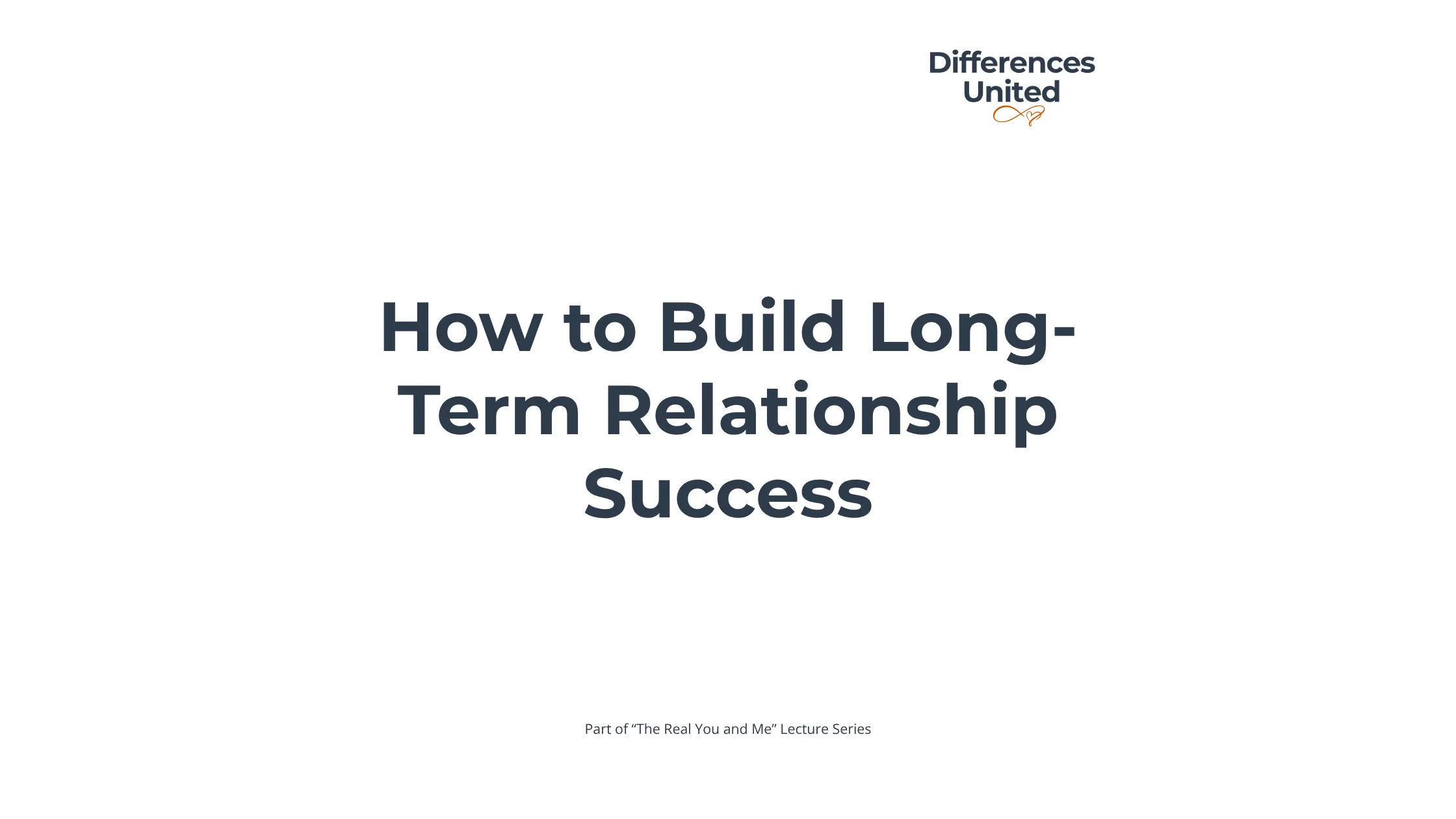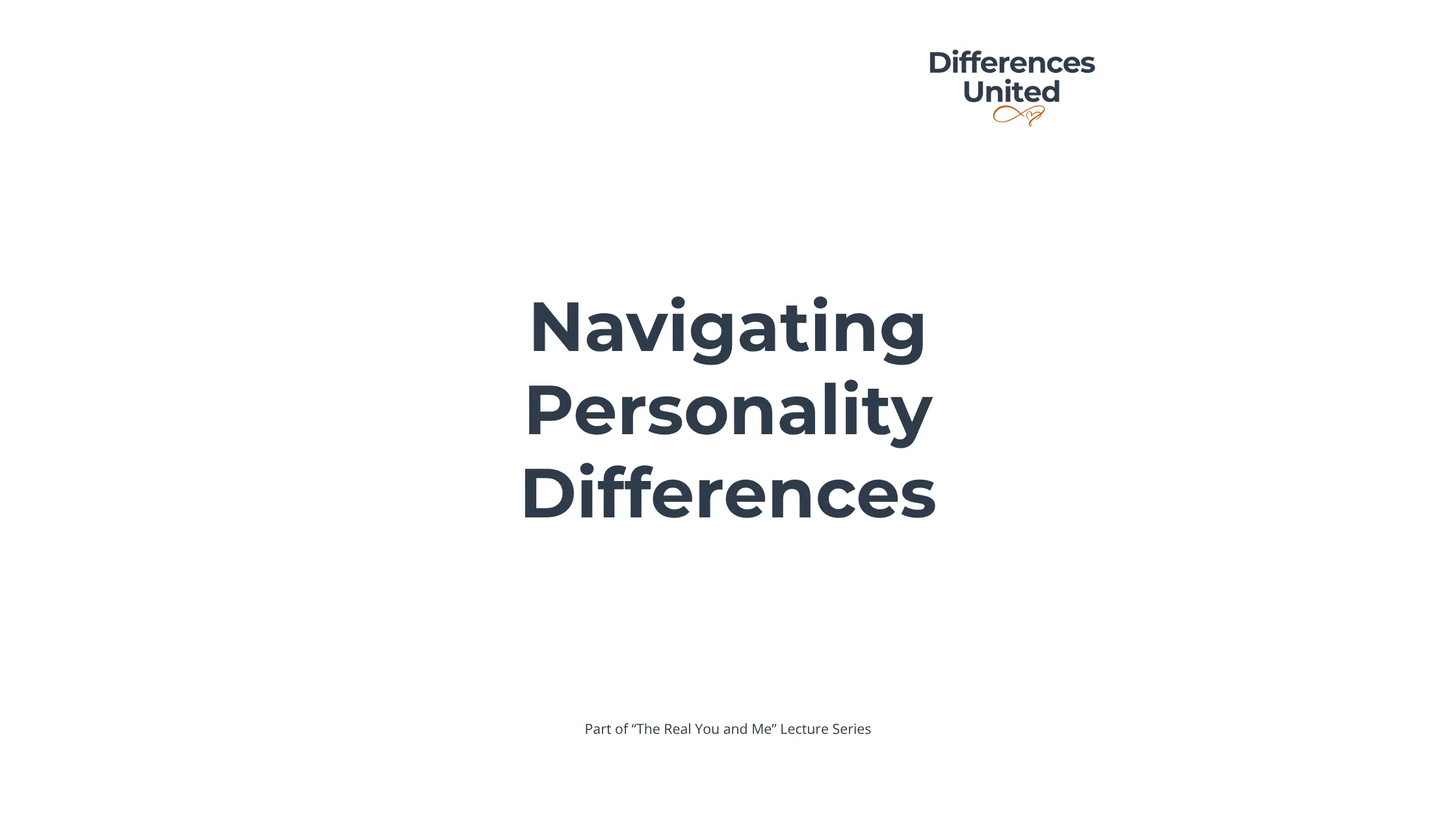Block 1 Articles list for The Real You and Me Relationship Program
- Article 1 - Why We React in Relationships - Part 1
- Article 2 - Why We React in Relationships - Part 2
- Article 3 - Self-Awareness in Conflict: Notice Before You React
- Article 4 - Creating Lasting Change in Relationships
- Article 5 - Team Mindset
- Article 6 - Navigating personality differences in relationships
- Article 7 - How to Build Long-Term Relationship Success
In this article, we’re laying the foundation for understanding why we react in relationships the way we do towards our partner.
In part 1 we explored the Autopilot system and Perception. Now in part 2 we explore Mental Filters and Personality formation.
Filters, Heuristics, and Biases: How Emotional Reactions Are Shaped
Let’s expand the idea that we are reacting to our understanding of what’s happening.
We see every situation through our unique mental filters. Those filters may be helpful or dysfunction and they shape how we subjectively interpret our partner’s words, gestures, silences and actions.
These mental filters fall into three categories: Heuristics, Biases, Cognitive Disctortions.
Heuristics: The Mental Shortcuts in Relationships
Heuristics are our mental shortcuts—our habitual ways of interpreting what’s happening. For example, if your partner says, “I’m fine,” and you’ve always taken that at face value, you might move on. But for them, “I’m fine” might mean, “I don’t feel safe to share right now.”
Healthy heuristics help relationships, for examples:
- When your wife approaches while you’re working, it may be a bid for connection. Giving her a hug or a kiss can meet both of your needs and strengthen your bond.
- If you know your partner may forget evening plans because they’re working, gently reminding them to start wrapping up helps avoid friction.
Being mindful of each other’s behavior patterns allows you to work with them rather than seeing them as flaws. However, habitual ways of interpreting can misfire.
Biases: When Our Shortcuts Misfire in Relationships
When we use habitual thinking especially in new situations, they can cause predictable errors in judgement. Those errors are called biases.
For example:
Confirmation bias: When in a situation we notice and remember things that support what we already believe.
- “Partner staying quite during conflict, must mean they don’t care.” this limits our capacity to communicate in productive ways.
Anchoring bias: Relying on initial impression to make judgement calls.
- “You see dirty dishes and get frustrated with your partner for not washing the dishes as always. Without considering nuances.”
Bandwagon effect: Adopting beliefs because that is how others do it.
- “Like expecting from your partner what other people have in their relationships without taking into account each other”
These biases and snap judgements reinforce unhelpful narratives and cause emotional distance in your relationship.
Cognitive Distortions: The Patterns That Get Stuck
When those biases happen again and again, they solidify into patterns of perception — ways we interpret everything. Usually they lead to emotional pain and constant misunderstandings.
For example:
Arbitrary inference: Drawing conclusions without real evidence. (like relying on feelings to make judgements)
Overgeneralizing: Like applying one negative instance to everything. “If this is happening here, it will be in all similar instances” (This is where labelling things is especially playing out)
Black and White Thinking: For example seeing situations as either all good or all bad.
Those distortions often come from efforts to protect ourselves, but over time, they can limit our emotional flexibility and harm the relationship.
They make it hard to recognize change, growth, or nuance.
The more these distortions shape our reality, the harder it is to meet our partner with compassion. But once we notice them, we have a chance to create change.
Why Self-Discovery and Emotional Regulation Matter in Relationships
When we’re stressed, it’s hard to see clearly and not distort our understanding of what is happening.
We’re more likely to fall into our habitual reaction loops. That’s why developing awareness — of your experiences, reactions, and interpretations — matters so much.
You can’t always stop the reaction. But you can start to recognize: “Oh, that’s not necessarily what’s happening here.”
And that awareness gives you room to choose something different. And in that space, you can meet yourself—and your partner—with more compassion. Not to excuse hurtful behavior, but to understand where it’s coming from, and take steps towards each other.
How Personality Patterns Form (And Why They Can Change)
Personality is complex—part biology, part psychological influences. From the time you were small, you learned how to get your needs met. You mirrored the people around you. You learned what got attention, what got rejected, what felt safe, and what didn’t.
Over time, those adaptations became habits. Then those habits became rules. “If I do this, I get that.” That’s the base of personality tendencies.
We learned both helpful and unhelpful ways of functioning. For instance, we may manipulate to get what we want or interpret feedback as criticism due to pas wounds.
But those tendencies are not fixed. You can update them. You can work with them.
The Enneagram: A Tool for Understanding Relationship Patterns
The Enneagram helps shine a light on what we often can’t see about ourselves. Not to label you, not to box you in, but to help you recognize where your patterns are playing out and how they’re shaping your relationships.
Such things as your unconscious behavior patterns, what you strive to get from relationships and how you handle stress and conflict.
However, accurate typing is essential. Taking random personality tests after a long day may not yield reliable results. In fact, your internal biases and distortions can make it hard to see yourself clearly.
A facilitated typing interview helps uncover blind sports, contradictions in self-perception, and idealized self-images. This process gives you a language for what drives you beneath the surface your motivations, needs, emotional dynamics that are hard to express, and how you might unknowingly distort interactions.
And from there, you can grow. You can make room for more clarity, more patience, more compassion.
Building Compassion and Understanding in Partnership
Every relationship involves two unique histories and two distinct autopilot systems. You and Your partner have different mental maps and both are valid.
The work isn’t to fix yourself or your partner. It’s to grow together.
It starts with, seeing each other’s inner worlds, hearing each other beyond words and understanding how each of you makes sense of life.
That’s what builds connection. That’s what builds trust. And that’s where compassion lives — not in fixing each other, but in choosing to stay open while navigating the messiness together.
Full Article List for Block 1 - The Real You and Me Relationship Program
- Article 1 - Why We React in Relationships - Part 1
- Article 2 - Why We React in Relationships - Part 2
- Article 3 - Self-Awareness in Conflict: Notice Before You React
- Article 4 - Creating Lasting Change in Relationships
- Article 5 - Team Mindset
- Article 6 - Navigating personality differences in relationships
- Article 7 - How to Build Long-Term Relationship Success
FAQ for Part 2: Why Do We React in Relationships?
How do mental filters affect communication in relationships?
Mental filters are subconscious beliefs and habits that shape how you interpret events. They include:
- Heuristics (shortcuts like “If they’re quiet, they must be fine”)
- Biases (misapplied assumptions like “They never care when I’m upset”)
- Cognitive distortions (rigid thinking like “It’s all or nothing”)
These filters help us make sense of the world, but they can also cause misunderstandings and conflict when we’re unaware of them.
How to stop automatic emotional reactions in relationships?
Confirmation bias is when you notice and remember only what supports your existing beliefs. If you believe your partner avoids conflict, you may ignore the times they try to engage and only remember when they stay silent—reinforcing the belief, even if it’s no longer true.
Is showing compassion the same as excusing bad behavior?
No. Compassion means choosing curiosity over judgment. It means trying to understand where a reaction is coming from, not justifying harmful behavior. Compassion is about recognizing the story underneath the action—your own and your partner’s—and responding with intention.
Can personality patterns or emotional habits change over time?
Yes, but it takes awareness and consistent effort. Many of our personality tendencies were formed early as strategies for getting needs met. They feel “natural,” but they can evolve over time—especially when we recognize which ones are outdated or harmful in our current relationships.
How does the Enneagram help with relationship dynamics?
The Enneagram helps uncover unconscious behavioral and emotional patterns that shape your relationships. It reveals:
- What you strive for emotionally
- How you tend to handle stress and conflict
- How you try to get love, safety, or control
When used correctly (preferably with guided support), the Enneagram becomes a tool for self-awareness, empathy, and personal growth.
Why is accurate Enneagram typing important for self-awareness?
Because your own biases can distort how you see yourself. Free online tests often give different results depending on your mood, stress level, or idealized self-image. A professional typing interview can help uncover your true core patterns more reliably.



